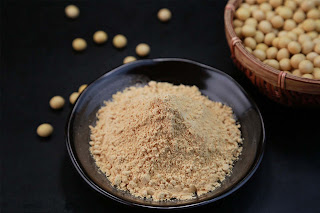The extrusion of textured vegetable protein is a unique process
Abstract: One of the fastest growing global segments in the food industry is the production of TVP or texturized vegetable protein. This alternative protein source provides an economical and ecological option to traditional sources, such as meat and poultry.Textured vegetable protein (TVP) is a unique extruded product that can be produced from various specifications of raw materials while controlling functional characteristics such as density, rehydration speed and time, shape, product appearance and taste.
Keywords: textured vegetable protein, extrusion, soy textured protein
Related products for this article: Textured vegetable protein (TVP)
Extrusion cooking is a continuous process by which many foods are produced on an industrial basis. Texturized proteins, a unique product made by extrusion, can he produced from a wide range of raw ingredient specifications, while controlling the functional properties such as density, rate and time of rehydration, shape, product appearance and mouthfeel. Raw material specifications for extrusion of texturized proteins have increased and now include: PDI ranges from 20 to 80; fat levels from 0.5 to 6.5%; fiber levels up to 7%; and particle size up to 8 mesh (2360 micron). Additional benefits of extrusion cooking are denaturing of the proteins, deactivation of heat liable growth inhibitors, control of bitter flavors and the homogeneous bonding of ingredients that may include colors, chemicals and other additives which can have an effect on appearance or textural quality.
Extrusion of texturized proteins is one of many successful applications of this unique cooking process. There are other methods utilized to produce texturized proteins including spun soy protein isolates and formed meat analogs. Spun soy protein isolates involve redissolving precipitated vegetable proteins and passing them through a spinneret into a precipitating bath. The bundles of fibers resulting from this are compacted, shaped, flavored, cooked and/or dried and packaged. Formed meat analogs are blends of various protein sources such as isolates, glutens, albumin, extrusion-cooked vegetable proteins and others which are blended with oils, flavors and binders before forming them into sheets, patties, strips or disks.
Extrusion-cooked texturized proteins include meat extenders in the form of chunks or small granular pieces which are wet milled or produced directly off the extruder. Extruders also are able to produce a meat analog tha t has a remarkable similarity in appearance, texture and mouthfeel to meats. The utilization of extrusion cooking throughout the food industry has shown that a variety of products can be made on extrusion equipment. Some of these products include breakfast cereals, breadings, snacks, instant rice, instant pasta, starch modifications, animal and aquatic feeds.




评论
发表评论